As the blockchain ecosystem grows more complex, one problem remains at the center of it all: interoperability. Today’s networks often operate like isolated islands—unable to trustfully share data or value without relying on centralized bridges or trusted intermediaries. The result? A fragmented, insecure Web3 experience where composability and scale remain just out of reach.
Enter Union, a project founded by Karel Kubat, a seasoned systems engineer and former Polkadot IBC developer. By leveraging zero-knowledge proofs, Union is building a secure, trustless interoperability protocol that redefines how blockchains communicate. With its ZK-based consensus engine and blazing-fast proof generation, Union enables decentralized cross-chain messaging without compromising on speed, performance, or security.
To learn more about Union’s technical breakthroughs, the philosophy behind chain abstraction, and why the future may be filled with thousands of purpose-built chains—all connected by Union—Presto Research sat down with Karel to dive deep into the project’s origin, vision, and what’s next.
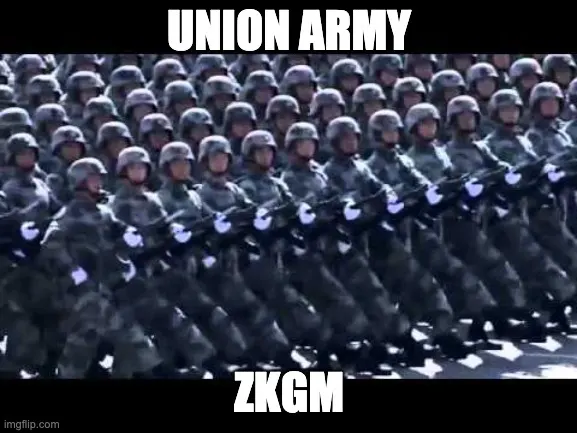
1. Can you walk us through your background and how it led you to start Union?
I started coding smart contracts in 2016, beginning with Solidity and expanding into Rust and Go by 2018. With a background in Systems Engineering and a strong focus on low-level infrastructure, I eventually developed the IBC protocol on Substrate (Polkadot). I also served as CTO of Composable Finance, where I worked deeply on cross-chain systems.
About two years ago, I decided to start Union. We founded it with a clear conviction: interoperability could and should be done better. At the time, the ecosystem was plagued by bridge hacks and insecure cross-chain systems. We saw an opportunity to build a mathematically secure, trustless bridge protocol using zero-knowledge proofs. It was something we felt was urgently needed to move Web3 forward in a safer, more scalable way.
2. How do you explain what you’re building at Union to non-technical friends or family?
I usually explain it like this: imagine a bunch of islands that aren’t connected in any way. Each one operates on its own, with no clear way to communicate or send things between them. What we’re building at Union is a way to connect those islands so you can safely send messages or value from one to another, without needing to trust anyone in the middle. It’s secure, trustless, and no one can intercept or tamper with what’s being sent.
Figure 1:All ERC-20 LSTs can be bridged to Babylon Genesis via Union for DeFi use cases
Source: Union
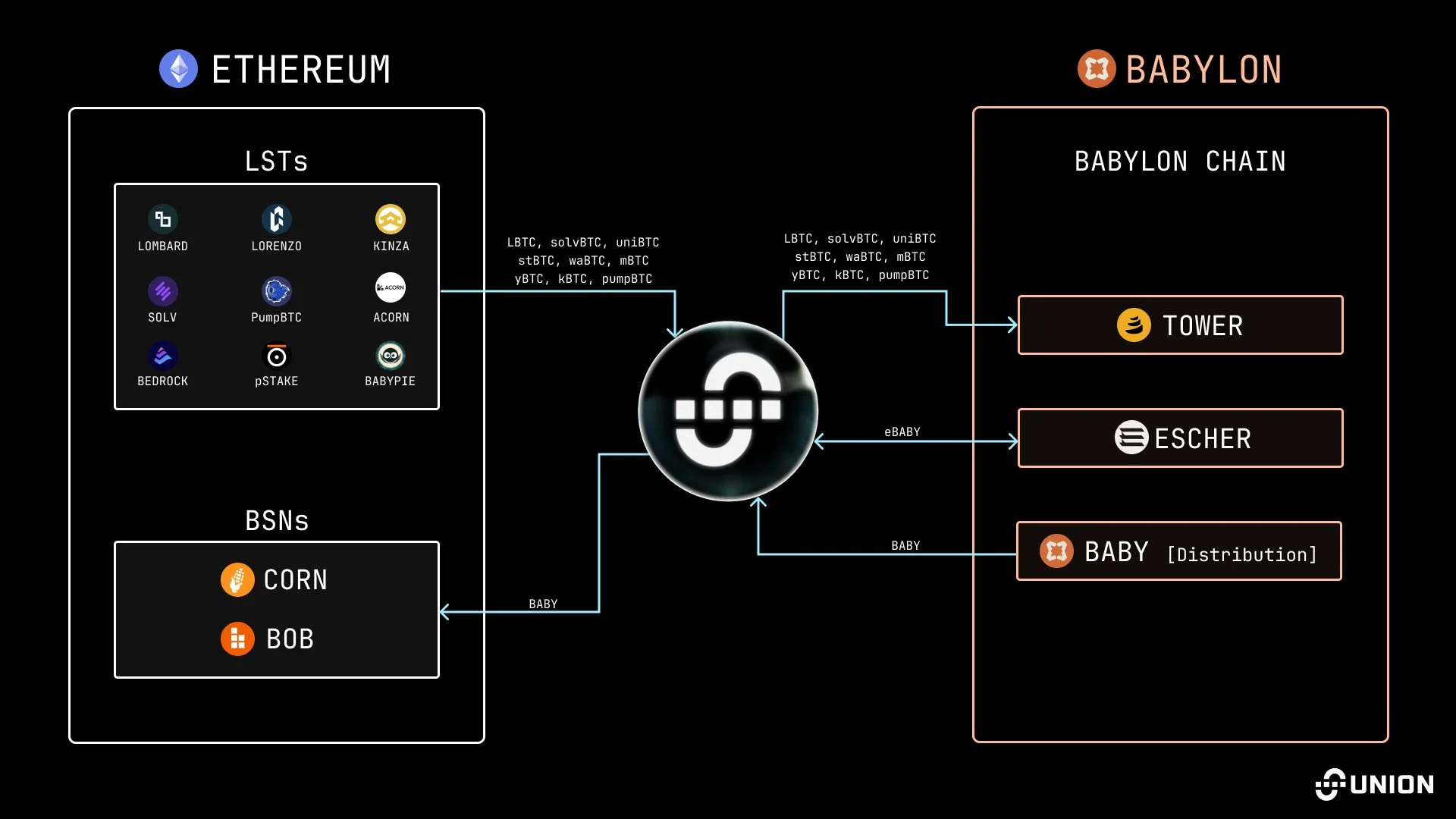
3. “Cross-chain” and “interoperability” have been buzzwords for a long time. What’s something unique about Union’s approach?
Union’s key innovation is the use of zero-knowledge proofs (ZKPs) to achieve decentralized, trustless interoperability without relying on off-chain actors or centralized verification. Most interoperability solutions depend on multi-sigs or trusted parties, Union uses ZKPs to prove consensus across chains in a fully verifiable, cryptographically secure way. This enables fast, low-latency communication between any execution environments, with fast bridge times and no compromise on security or decentralization. By reworking the consensus engine, Union can generate zk-consensus proofs in just five seconds on consumer-grade hardware, delivering high scalability and performance, with ongoing optimization.
3.1 And what’s something most people misunderstand about cross-chain architecture?
Most people think cross-chain architecture is only about transferring assets, but it's just as much about transferring data. With the ability to pass general messages between chains, developers can build powerful new applications that aren't tied to any single chain. This opens the door to truly chain-abstracted experiences.
4. Cross-chain systems have historically been vulnerable to exploits. How does Union approach security and minimize potential attack vectors?
That historical vulnerability often stemmed from the fact that those systems relied on trusted parties or multi-sigs. Meaning, that
Cross-chain systems have historically been vulnerable because they rely on trusted parties, off-chain actors, or multi-signature setups. Each of which introduces centralized points of failure. Union eliminates these vulnerabilities by using zero-knowledge proofs (ZKPs) to prove consensus across chains in a fully decentralized and cryptographically secure way. Union's protocol generates verifiable ZK proofs that attest to the state and validity of events across chains. These proofs are generated in just five seconds on consumer-grade hardware, making the system both highly performant and scalable, without compromising on trustlessness. By removing off-chain dependencies and centralized verification, Union dramatically reduces the surface area for potential exploits and ensures that cross-chain communication remains secure, verifiable, and autonomous.
Figure 2: Bridge exploits explained
Source: Presto Research “Cross-chain Bridge Exploits: There Are More Risks Than You Know”
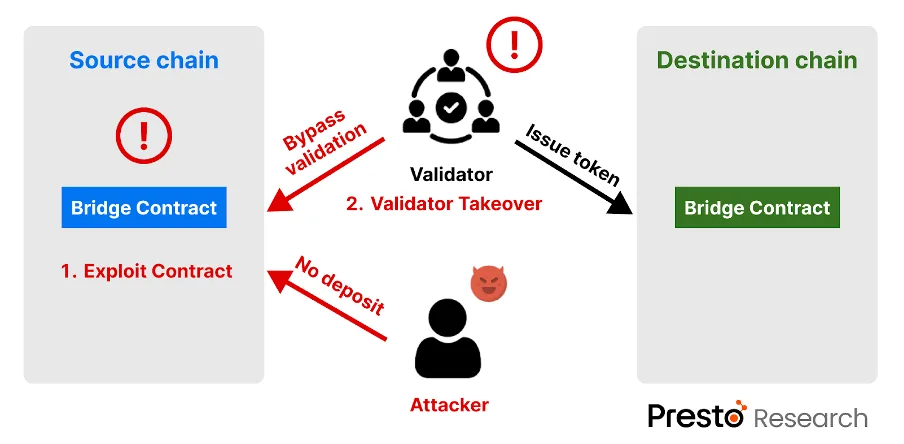
5. Could you share a few real-world use cases or projects already building on Union?
One great example is Escher Finance, which uses Union’s interoperability to offer chain-abstracted liquid staking. This means users can stake and interact with the protocol seamlessly, regardless of which chain they’re on. The underlying complexity of cross-chain communication is handled by Union, allowing Escher to deliver a unified experience across ecosystems.
6. One thing that stands out about Union is the research your team publishes. Are there 1–2 articles or papers you’d recommend for someone who wants to understand your design philosophy more deeply?
I'd recommend starting with our article on State Lenses: State Lenses. It captures the core of our design philosophy around interoperability. In it, we explain how we use state lenses, also known as recursive light clients, to enable direct, trustless connections between chains. It's a highly technical read, but well worth it if you're interested in the underlying mechanics.
For builders, I also put together the Goblin Book: Goblin Book. It dives into the architecture of Union, explaining its core components and how to build on top of them, complete with coding examples. It's a great starting point if you’re looking to get hands-on with the protocol.
Figure 3: Union’s website features a range of research publications
Source: Union
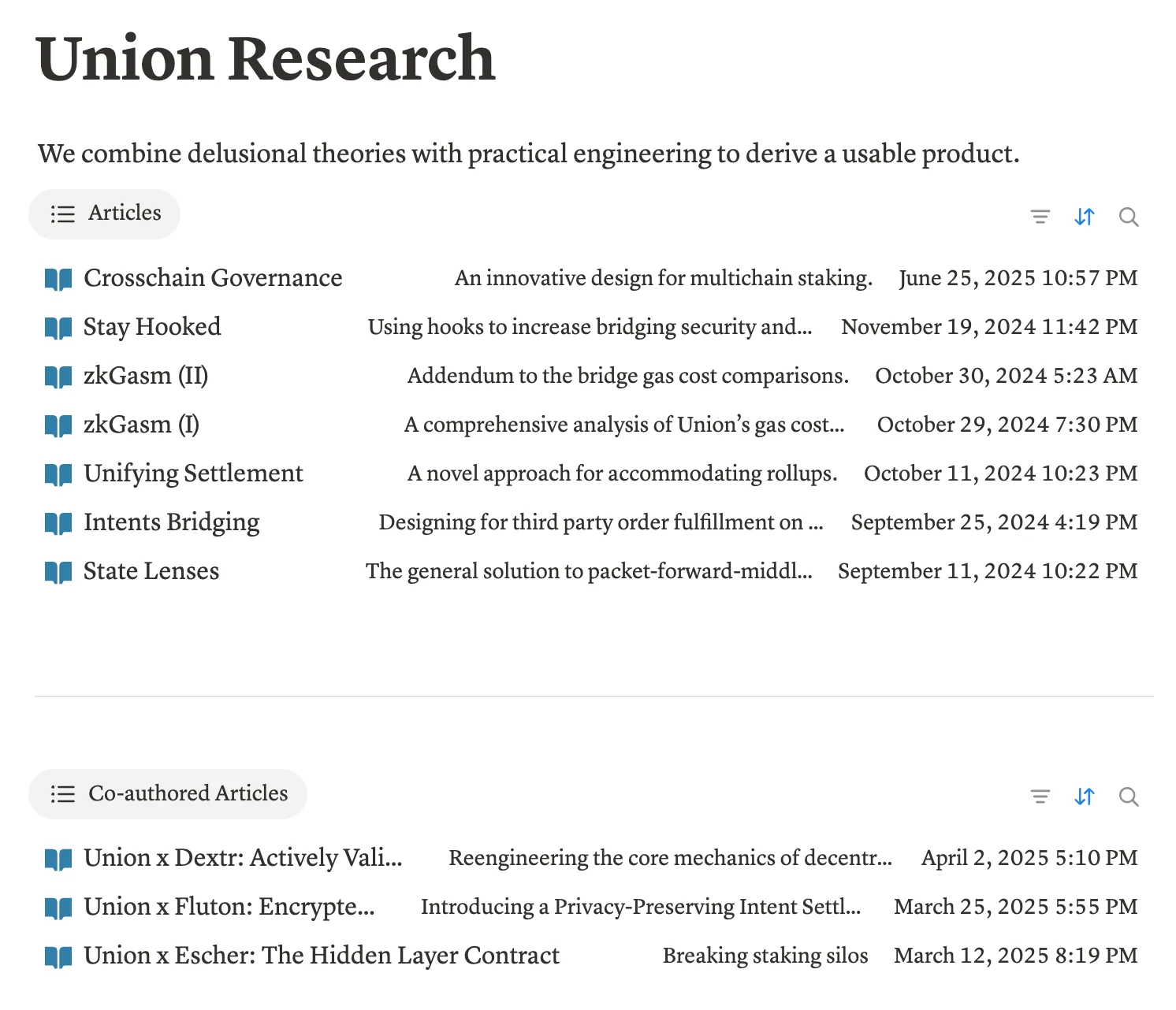
7. Outside of Union, which teams or protocols do you find particularly interesting right now?
Among many impressive projects, Boundless and Babylon Genesis stand out as particularly exciting.
Boundless uses zero-knowledge (ZK) technology to create a universal compute layer, enabling fast and secure verification of data across various blockchains. Its R0VM allows developers to build scalable apps with efficient off-chain proofs, enhancing speed and privacy for any blockchain network. Babylon Genesis is exciting for its Bitcoin restaking approach, creating Bitcoin Supercharged Networks (BSNs) that let Bitcoin holders lend their Bitcoin to secure other blockchain networks while keeping full control. This unlocks new ways to earn rewards with Bitcoin, making Bitcoin even more interesting as an asset to invest in.
8. What’s one narrative or theme you think is underrated in the current crypto cycle?
Zero-knowledge (ZK) cryptography is an underrated theme in the 2025 crypto cycle, despite its huge impact on privacy, scalability, and trustless systems. While modular blockchains and AI integration dominate headlines, ZK’s ability to enable private, efficient, and verifiable computation is quietly reshaping the landscape. As we currently see with Succinct, Boundless and of course Union.
Figure 4: How does a ZK proof work?
Source: p2v ventures
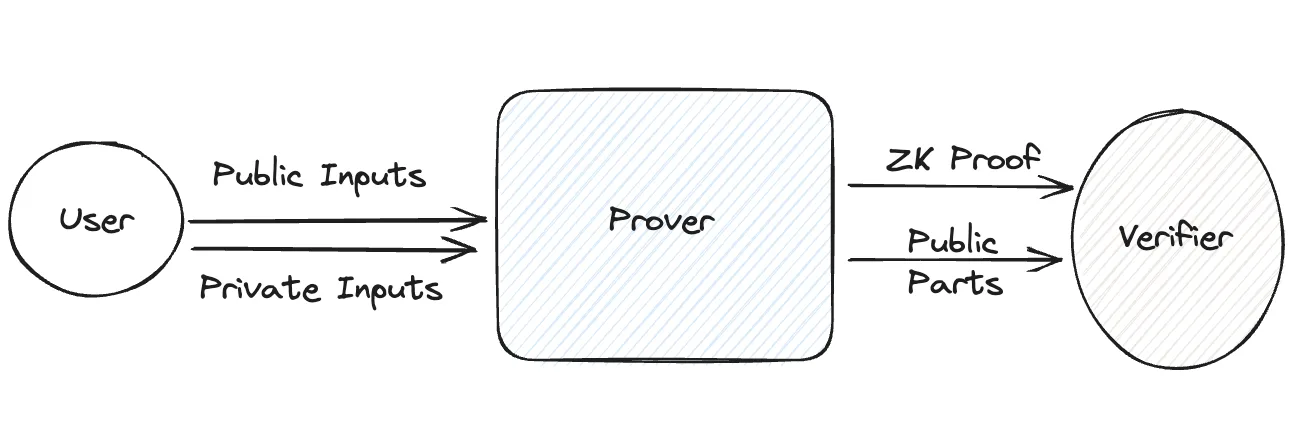
9. What’s your advice to someone young who wants to start building in crypto today?
Start by immersing yourself in the ecosystem: start posting on X, join communities on Discord, or Telegram to learn from builders and stay updated on trends. Build something small but functional, like a smart contract or a dApp, to gain hands-on experience. Leverage open-source resources on GitHub to study code and contribute to projects. Network with other builders, share your work publicly, and seek feedback to iterate. Persistence and curiosity are key, crypto moves fast, so stay adaptable and keep learning.
10. Lastly, any alphas or thoughts you'd like to leave us with?
AI allows us to rapidly build useful apps. Rebuilding boring infra brings no joy to anyone. Businesses and new developers are moving on-chain because it equals creative freedom, not because of decentralization (though they don’t yet realize those are two sides of the same coin). And purpose-built chains just work better.
This means we get folks wanting to build actual useful stuff immediately, and hook into the stuff they like.
What’s being slept on, though, is that we are moving from a world of 30 L1s with no PMF to a world of 1000 purpose-built chains with incredible PMF. Union’s job is to build the glue to hold that new future together.
That’s all! Thank you very much Karel. I really appreciate your time, a lot of exciting things are coming from Union.



